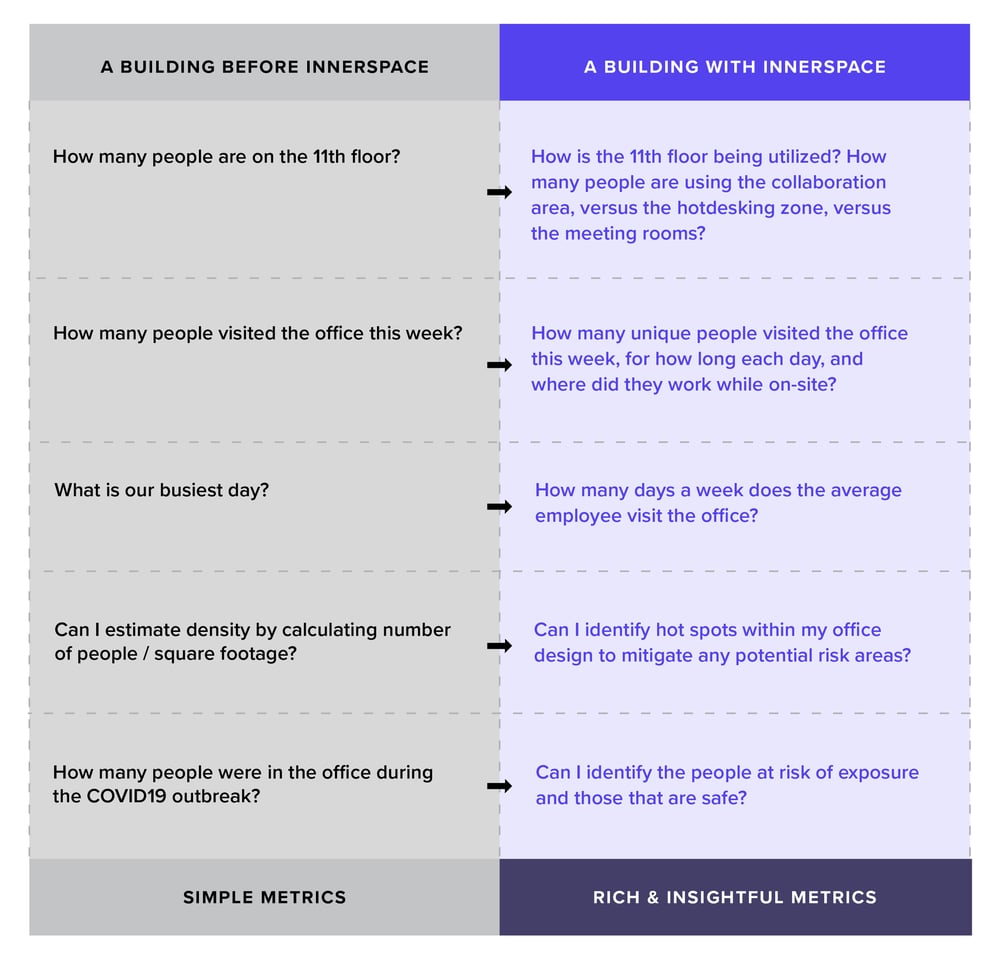Occupancy data: just one piece of the puzzle
As the future of work evolves, so too does the role the office will play and this raises questions critical to its evolution: How much office space is needed? How should it be designed? What is the purpose of the office? How can it help improve culture, communication and productivity? How will it serve my company’s growth?
In our article 5 Ways Businesses can Use Occupancy Data, we explored ways that businesses can leverage occupancy metrics to create data-driven services including desk reservation, meeting room reservation, digital signage, resource allocation, cleaning schedules, and more.
Occupancy is a great starting point to improving how an office supports the needs of its employees. In a study from JLL, nearly two-thirds of companies are using occupancy at some level to estimate vacancy, utilization, square-feet-per-employee, and cost-per-seat.
At InnerSpace occupancy is a part of our platform, but it is only the beginning. You see, occupancy is great at counting people and thereby estimating density by calculating people/total square foot. But occupancy is limited in its insight into the behavior of employees. And this is where indoor location data becomes a game-changer in the workplace experience.
Combining occupancy with indoor location data, transforms metrics from head counting to patterns and insights. It has the power to transform the employee experience for forward-leading companies.
With InnerSpace, simple metrics become rich and insightful:

These insights come only from anonymously measuring patterns in WiFi analytics. The highly accurate analysis offered by InnerSpace reveals exactly how people are using an office and interacting within it - in real time.
In the new office paradigm it will be vital to understand these patterns. By going beyond occupancy businesses can better serve their employees, improve the office for their evolving needs, use data to drive real estate leasing decisions, and inform workplace policies.
It’s time to grow
Analyzing occupancy data is a strong first component of a return-to-workplace strategy. It starts a company’s journey toward becoming a Dynamic Office. It’s important that you don’t stop there. By using a platform that combines occupancy with WiFi analytics, businesses have the opportunity to future-proof operations, create a space that supports employee needs, and informs real estate investment decisions. Combining these data sets, ensure the office grows right along with the evolving needs of a business and its employees.
Accurate space utilization data through Wi-Fi?
We'll prove it to you.
See why industry leaders leverage InnerSpace to generate valuable insights that go beyond occupancy.

